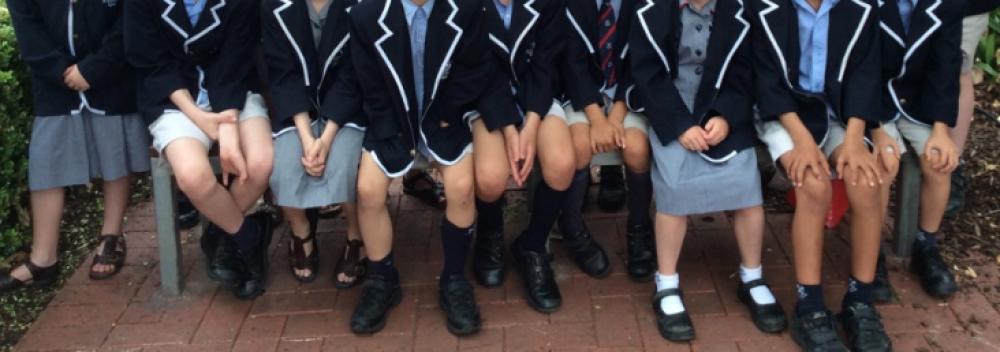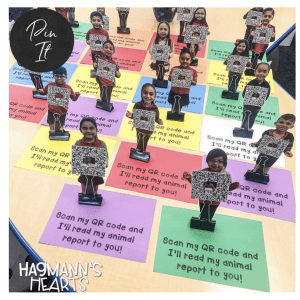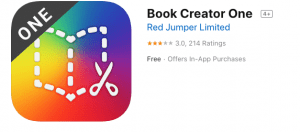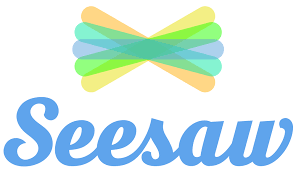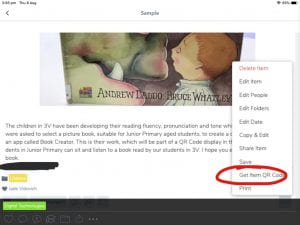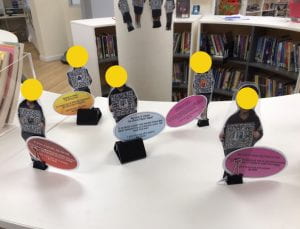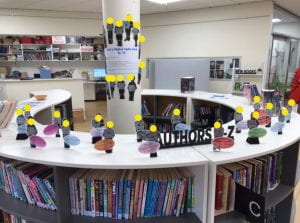Hi Everyone,
It has been a while since my last blog post, I’ve been rather busy adapting to full time work after returning from maternity leave this year. I feel I’m managing quite well but my blog has been sadly neglected. Until now!
Recently I stumbled across this link to Julie Smith’s Blog called The Techie Teacher:
I have always wanted to do this with my students and thought Term 3 was the time to start this process. I have had staff at my school ask me about sharing how my class did it, so this blog is dedicated to my coworkers at St Andrew’s School.
Firstly, I decided what my intention for learning would be for this task. I have been focusing on developing greater fluency, expression and pronunciation when my students read aloud. With this in mind, I decided to create audio books for our school library. I told my students they needed to choose a picture book, read it for a week and practise their reading, keeping their fluency, expression and clear pronunciation in mind. We would be recording their voices, reading their chosen books and sharing them in the school library. Their books needed to be suitable for young children (ELC to Year 2), however older children may also enjoy listening to them.
After reading their books at home all week, they were ready to record! We used iPads and an app called Book Creator, which is a way of creating digital books. If you’ve never used it, I would highly recommend giving it a try.
Students took photos of each page of their picture book and then recorded their voices on each page. We then shared our digital books from Book Creator to Seesaw. Our school uses Seesaw as a tool for communication with parents and to document student learning in a digital format. If you haven’t used Seesaw before and would like to learn more about it, please visit my previous blog post about it. I presented at EdTech SA a few years ago about using Seesaw as digital portfolios. Here is the link:
https://jadevidovich.edublogs.org/2016/07/20/edtechsa-conference-2016-seesaw-and-digital-portfolios/
We exported the book as a video to Seesaw, which meant it would automatically play for our viewers. All we needed to do from here was share the QR Code, which Seesaw generates for you.
I screen shot their QR codes, printed them to a suitable size for our display and the children stuck them on top of the photos I’d taken of them, holding a mini whiteboard as shown here:
Once this was done the children cut out their pictures, glued on their QR codes and we laminated them and attached a large black binder clip to the feet to help them stand up. I also asked my students to write a brief summary of their book and a 5 star rating, we used Comic Life to get the speech bubble template.
Here is what our library display looks like:
I also created a step by step instruction guide for students to help them learn how to view our stories using the iPads. You can find the attachment of that document here and download it and adapt it to your task. It’s as simple as opening the camera on the iPad, holding it up to the QR code and then clicking the link that pops up to take you to the story.
I hope you can see the value of this task and adapt it to suit one of your learning intentions within your classroom. The possibilities are endless! I was speaking to our school Italian teacher, she could record students speaking Italian and share their dialogue with students and parents, create a translator or a set of phrases to assist with Italian pronunciation. Then I was talking with a passionate science teacher and suggested he use it for recording the methods of experiments, videos of the experiments, documenting the scientific process along the way. What about Music lessons, Art, Dance, PE? So many possibilities.
ACARA Links: English Content Descriptors:
- Use software including word processing programs with growing speed and efficiency to construct and edit texts featuring visual, print and audio elements (ACELY1685 – Scootle )
- Use interaction skills, including active listening behaviours and communicate in a clear, coherent manner using a variety of everyday and learned vocabulary and appropriate tone, pace, pitch and volume (ACELY1792 – Scootle )
I hope you’ve enjoyed reading about digital books and QR codes.
Thanks.
Jade Vidovich
